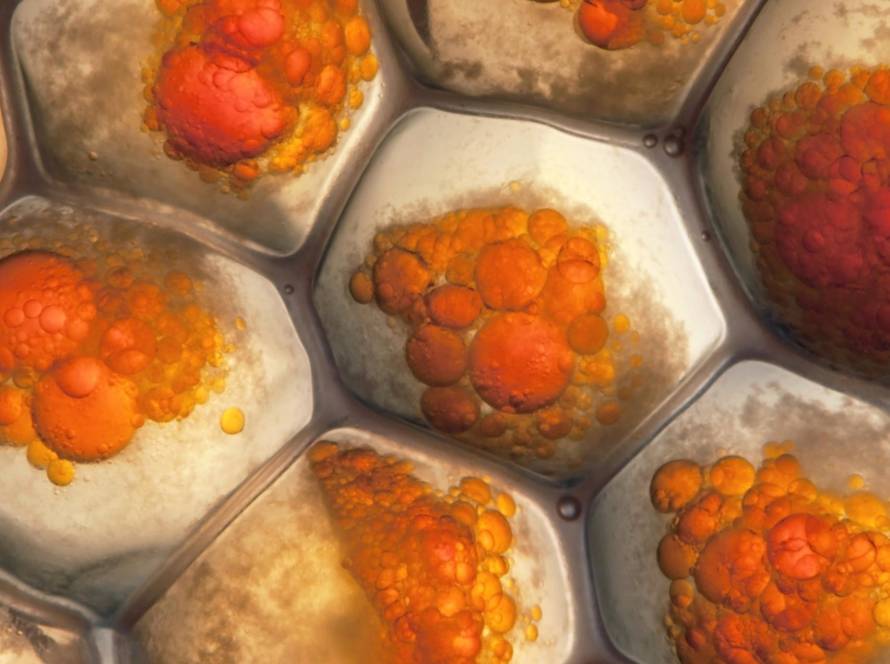Life expectancy has improved from 20 years in prehistoric times to around 85 years in 2023 due to various socioeconomic and medical factors. Yet our healthspan hasn’t grown at the same rate. A concerning gap of 9.6 years exists globally between how long people live and how long they stay healthy.
Anyone who cares about aging well should understand this gap. This piece will get into the differences of lifespan vs healthspan. We’ll look at the science behind this trend and share proven ways to boost our healthy years.
Understanding lifespan vs healthspan
Precise terminology plays a crucial role in discussions about aging and longevity. People often mix up lifespan, healthspan and life expectancy, yet these represent completely different aspects of human longevity.
Lifespan vs healthspan definition
Lifespan represents the maximum number of years humans can potentially live. The maximum documented human lifespan is 122 years.
Healthspan measures the period of life spent in good health without chronic diseases and age related disabilities. Quality of years matters more than quantity.
Difference between lifespan and life expectancy
Lifespan and life expectancy represent two distinct concepts, though people often use them interchangeably. Life expectancy shows the average number of years someone can expect to live based on statistical averages. Several factors affect this figure:
- Gender and race;
- Environmental exposures;
- Education and income levels;
- Healthcare access;
- Lifestyle choices (exercise, diet, smoking, alcohol consumption).
Life expectancy changes throughout someone’s lifetime.
Why the difference matters for aging well
The gap between healthspan and lifespan creates potentially challenging years of managing disease and disability. Aging experts now recognize that increasing healthspan matches what people want. Studies show that very old people are more concerned about the dying process and impacts on loved ones than death itself.
Healthspan and lifespan share an intrinsic connection. Research on centenarians showed that 42% experienced no age-related chronic diseases before reaching 80. This suggests that extending healthy years naturally extends total years too.
The science behind the healthspan-lifespan gap
Science shows a worrying truth about the gap between how long we live and how long we stay healthy. Medical breakthroughs let us live longer, but our healthy years haven’t caught up. This creates major challenges if we have health issues and puts pressure on healthcare systems worldwide.
Global trends and statistics on the gap
The difference between healthy years and total lifespan has grown wider across the globe. According to studies, numbers jumped from 8.5 years in 2000 to 9.6 years in 2019, a 13% rise. People now spend almost a decade dealing with health problems.
Among all 183 WHO member states, the US shows the biggest gap at 12.4 years. Australia comes next with 12.1 years, followed by New Zealand at 11.8 years and the UK at 11.3 years. These gaps strongly associate with noncommunicable diseases and overall sickness rates.
Biological aging vs chronological aging
The gap makes more sense when we separate chronological age from biological age. Our chronological age counts our years alive, while biological age shows how healthy our cells are.
Scientists used to think genes controlled aging. Now we know genes only account for 25% of the aging process. Other factors that affect our biological age include:
- Telomere length (protective caps on DNA that shorten with age);
- DNA methylation patterns (changes in gene expression);
- Cellular senescence (when cells lose ability to divide).
Studies reveal some people’s biological age can be much younger or older than their actual age. This explains why some 80 year olds stay active while others decline in their 60s.
Sex differences in healthspan outcomes
Women face a 2.4 year larger gap than men between healthy years and total lifespan, even though they live longer. This difference starts showing up during teenage years and keeps growing with age.
Women lose more healthy years to muscle and bone problems, mental health issues and brain diseases. Men struggle more with heart disease, lung cancer, kidney problems and injuries.
Biology explains some of these differences, genes, hormones and immune system variations all play a part. Social norms also shape how each gender seeks healthcare.
How to increase our healthspan through lifestyle
Putting research to work helps bridge the healthspan-lifespan gap. Scientists have found specific lifestyle changes that can help us live longer in good health.
Dietary patterns that support longevity
The food we eat greatly affects how well we age. The largest longitudinal study that tracked over 105,000 people for 30 years showed that people who followed healthy eating patterns had 20% greater odds of healthy aging.
The best approach seems to be a diet rich in plant-based foods with some healthy animal-based foods. The most beneficial foods include:
- Fruits, vegetables and whole grains;
- Unsaturated fats and nuts;
- Legumes and low-fat dairy.
These foods consistently link to a longer healthspan, while trans fats, sodium, sugary drinks and processed meats harm healthy aging.
Exercise and physical activity recommendations
Physical activity remains one of our oldest and most effective lifestyle medicines. The CDC recommends these weekly goals for adults 65 and older:
- At least 150 minutes of moderate-intensity aerobic activity (or 75 minutes of vigorous activity);
- Muscle-strengthening activities on 2+ days targeting all major muscle groups;
- Balance activities to prevent falls.
Small amounts of activity throughout the day add up to meet these goals. Research shows people who did 150-300 minutes of moderate activity weekly had 19-25% lower all-cause mortality. Exercise benefits go beyond longevity, regular physical activity maintains brain function, preserves independence and delays age related muscle loss.
Importance of sleep and stress regulation
Quality sleep plays a vital role in extending healthspan. Poor sleep disrupts hunger hormones, reduces physical activity and affects glucose metabolism. A newer study shows that better sleepers were 15% less likely to face healthspan-limiting events.
Chronic stress speeds up biological aging through increased inflammation and oxidative stress. Breath work, adaptogens and regular exercise help manage stress effectively. Research confirms that physical activity lowers stress hormones like cortisol while improving sleep quality.
Social and cognitive engagement strategies
Social connections boost healthspan powerfully. Studies shows that people with strong social ties live longer, stay healthier and feel happier.
Building social connections works better when we prioritize face-to-face interactions, find public spaces to gather, support local community projects and pursue shared interests.
Mental engagement protects brain health too. Research shows older adults who learned quilting or digital photography had better memory improvement than those doing simpler activities. People who participated in cognitive training focused on reasoning and processing speed showed less cognitive decline over 10 years.
Supplements and tools to support healthy aging
Scientists are looking beyond lifestyle changes to discover targeted treatments that could help people live longer, healthier lives. These treatments want to slow down aging at the cellular level.
Overview of senolytics and NAD+ boosters
Senolytics are promising compounds that target and remove senescent cells, cells that no longer divide but stay metabolically active. These “zombie cells” release inflammatory factors (the senescence-associated secretory phenotype or SASP) that lead to age related diseases.
The original senolytic cocktail, dasatinib plus quercetin (D+Q), showed remarkable results in animal studies:
- Extended healthspan and lifespan in aged mice;
- Improved cardiovascular function and physical performance;
- Boosted grip strength, treadmill endurance and daily activity.
There’s another reason to be optimistic: fisetin (a natural flavonoid) helps mice live healthier lives and reduces tissue damage in older animals.
Along with senolytics, NAD+ boosters help address the age-related drop in nicotinamide adenine dinucleotide (NAD+), a vital molecule for cellular energy production. The main NAD+ precursors include:
- Nicotinamide riboside (NR);
- Nicotinamide mononucleotide (NMN).
Clinical trials have shown these compounds are safe and effective in humans. A newer study showed NMN supplements increased muscle insulin sensitivity in overweight women with prediabetes. Most research is still in early stages and scientists haven’t determined the best dosing yet.
Intermittent fasting and caloric restriction mimetics
Intermittent fasting (IF) protocols, including time restricted eating and alternate day fasting, could extend both healthspan and lifespan through several mechanisms. These methods activate cellular repair pathways, start autophagy (cellular cleanup) and improve metabolic flexibility.
IF offers unique benefits compared to continuous calorie restriction:
- Boosted insulin sensitivity;
- Better cellular stress resistance;
- Lower inflammation.
People who can’t maintain regular fasting might benefit from caloric restriction mimetics (CRMs). These substances reproduce similar biological effects without dietary changes. Notable examples include:
- Resveratrol: Scientists first discovered it activates Sirtuin pathways;
- Metformin: This antidiabetic drug activates AMPK pathways;
- Oxaloacetate: This substance raises the NAD+/NADH ratio in animal models.
How to track biological age: epigenetic clocks, telomeres
Our chronological age doesn’t tell the whole story about our bodys condition. Biological age measurements are a great way to get insights into aging processes. The most important biomarkers include:
Epigenetic clocks measure DNA methylation patterns that change predictably with age. Modern versions like DNAm PhenoAge and GrimAge associate with chronological age and predict disease risk and mortality.
Telomere length measurements look at protective caps on chromosomes that get shorter with each cell division. Shorter telomeres link to higher disease risk and mortality.
Scientists are also learning about other biomarkers, including mitochondrial function tests, inflammatory markers and detailed blood panels.
Emerging therapies and what the science says
Research on senotherapeutics, compounds that either remove senescent cells or stop their harmful secretions, is moving faster than ever. JAK inhibitors showed they could reduce inflammation and improve physical function in aged mice.
Telomerase activators represent a new frontier. TA-65, extracted from Astragalus membranaceus, activates telomerase in vitro and in vivo, potentially protecting against telomere shortening.
These interventions are still experimental. Scientists need more human trials to establish the best protocols, safety profiles and long term effectiveness of anti-aging compounds.
Without doubt, the healthspan revolution brings a fundamental change in our view of aging. The focus shifts from just living longer to staying vital longer. Science proves that evidence based interventions boost our chances of living better, not just longer. Life’s quality matters more than its length. We should aim to add life to our years, not just years to our life.
Read more about:


